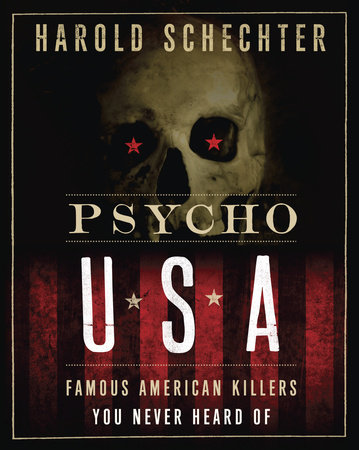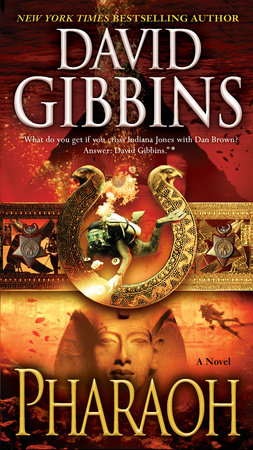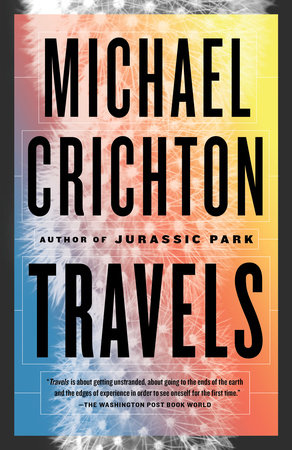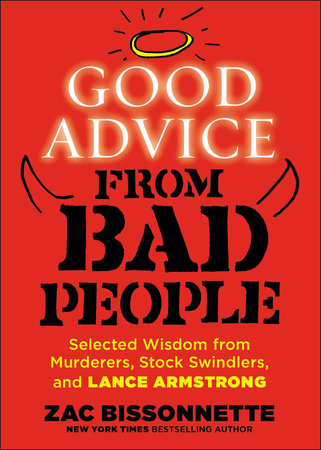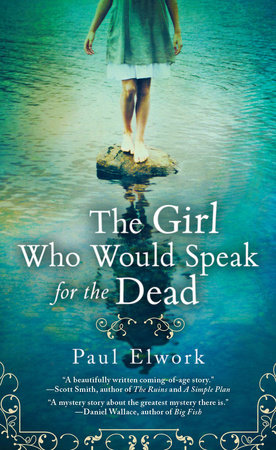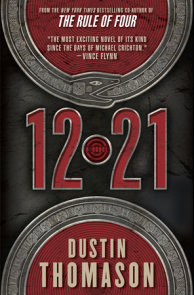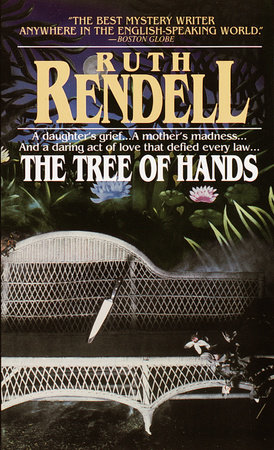Author Q&A
A Conversation with Ian Caldwell and Dustin Thomason,
authors of the debut novel
The Rule of Four
The novel centers on a real Renaissance text, The Hypnerotomachia Poliphili, a book that is fairly obscure. Explain how you discovered this book and why you choose to develop your story around it.
We owe it to a Princeton seminar entitled “Renaissance Art, Science, and Magic.” Ian’s final paper for the seminar dealt with a 1499 text entitled Hypnerotomachia Poliphili, one of the most beautiful and valuable books of early Western printing, and one that has divided scholars for years over its meaning and the identity of its author. By the time the research paper was finished, we were already planning to spend the summer writing an intellectual suspense novel together. The mystery of the Hypnerotomachia supplied a perfect starting point, and before long we had hatched a “solution” to the book’s mystery that became the centerpiece of the plot.
You seamlessly blend fact and fiction throughout the novel. For example, Savonarola is a real historical figure, about whom much is known, but what of Francesco Colonna, the author of the Hypnerotomachia? How much is really known about him and how fact-based is your portrait of him?
Oddly enough, scholars don’t even agree that the author of the book was Francesco Colonna, despite the internal evidence of the text that he was. As many “alternate” authors have been proposed for the Hypnerotomachia as have been proposed for Shakespeare’s plays. To further complicate matters, there are actually two Francesco Colonnas who may have written the book, and both are shadowy figures. One was a Dominican monk in Venice, about whom scattered Church records remain. The other was from the powerful Colonna dynasty in Rome, and though much is known about other members of his family, relatively little is known about Francesco. The Rule of Four tries to remain as faithful as possible to the biographies of the contending Francescos, but once Tom and Paul begin to decipher the Hypnerotomachia, they discover a (fictional) side to the Roman Francesco Colonna that no one had previously known.
Are secret codes really buried in the text of the Hypnerotomachia?
Yes. The disagreement among scholars is simply, "how many?" One of the Hypnerotomachia’s mysteries is that its author never explicitly gives his name, but his identity seems to be revealed when the first letter of every chapter is connected to the next: the letters form the Latin message “Poliam Frater Franciscus Columna Peramavit,” meaning “Brother Francesco Colonna Loved Polia Tremendously.” (Polia is the name of the main female character in the Hypnerotomachia.) In addition to this hidden acrostic message, the entire text of the book is written in a hybrid of languages that was considered gratuitously complex even in its own day. When these facts are combined with the strangeness of certain elements in the story—the detailed attention to the dimensions and features of buildings the protagonist sees, not to mention the protagonist’s sexual feelings toward those buildings—it’s easy to see why some readers believe there must be a hidden subtext.
What is a Rule of Four?
When Tom and Paul decipher the Hypnerotomachia, they find that the author, Francesco Colonna, refers to a “Rule of Four” that will be necessary to unlock the final portion of the text. The Rule appears to be related to a set of four cardinal directions and distances found in a diary that surfaces at the beginning of the novel. But Tom and Paul struggle to understand how Francesco Colonna intended the Rule to be used. In a different sense, the title The Rule of Four alludes to the friendship of the novel’s four protagonists as they enter their final days of college together.
The novel is about art, history, religion and scholarship, but it’s also very much about friendship. Explain.
In a more transparent way than the Hypnerotomachia itself, The Rule of Four uses academic disciplines and scholarly obsession as vehicles to explore human relationships. If the backbone of the novel is the deciphering of the Hypnerotomachia, then the novel’s soul is the story of friends and lovers coming to terms with the end of innocence. The Renaissance text is sometimes a mirror, and sometimes a foil, for the decisions and changes that accompany the approach of adult life.
Dustin, you’re a trained physician and Ian you’re a historian, why write a novel? And why together?
Out of consideration to real physicians and real historians, we’re actually just two writers who’ve had to spend the past few years wearing different hats. In fact, when we began The Rule of Four we were just two college grads who decided the first thing we wanted to do in the “real world”—before we had to tackle jobs and medical school—was satisfy a lifelong itch to write. We caught the bug when we met as eight-year-olds, and in the fourteen years that followed, we got used to being co-authors, whether of third-grade class plays or of high-school graduation speeches. Writing—and writing together—just seemed natural. If it hadn’t, we couldn’t have stuck with The Rule of Four for six years.
Explain the joint writing process.
It’s changed more than once since we began writing The Rule of Four in 1998. These days we brainstorm ideas, scene structures, and character arcs together over the phone; then one of us drafts a chapter and emails it to the other, who revises it. Other than the first three months after graduation, when we wrote side-by-side in Ian’s parents’ basement, we’ve spent the past six years hundreds of miles apart, relying heavily on phone calls and emails to make co-writing possible.
In a starred review, Publishers Weekly said about your novel “think Dan Brown by way of Donna Tartt and Umberto Eco.” How do you feel about this comparison?
We’d be lying if we said we weren’t thrilled; it’s hard to think of better company. The Da Vinci Code wasn’t published until after we’d finished The Rule of Four but The Secret History and The Name of the Rose were both inspirations to us back in 1998 when we started writing.
Ian, you went to Princeton and Dustin you went to Harvard. Why did you decide to set the novel at Princeton over Harvard?
At the time, in the wake of movies like Good Will Hunting and With Honors, Harvard seemed overdone. Though we were reading Sylvia Nasar’s book during the summer we began The Rule of Four, we had no idea “A Beautiful Mind” would be made into a film three years later, with Princeton in a starring role. Even if we’d known, though, our decision would’ve been the same. Princeton offered a tradition of undergraduate writing, from Fitzgerald’s This Side of Paradise to Edmund Wilson’s turn on the staff of the Nassau Literary Review, which gave us hope.
It’s been suggested that most first novels are really thinly veiled autobiography. Is this at all true about The Rule of Four?
Fiction in general seems to be a mixture of autobiography and wish fulfillment, and The Rule of Four is no different. In the autobiography category we would place many of the cosmetic details of life at Princeton, much of the research into the Hypnerotomachia, and the underlying preoccupation with friendship and love. In the wish-fulfillment category we would place writing a senior thesis as groundbreaking as Paul’s, and maybe, on a bad day, wanting a professor or two to turn up dead.
What’s next?
We’re at work on our next co-written book. Now that we’re both able to focus completely on our writing, we look forward to finishing it in a lot less time than The Rule of Four took!



